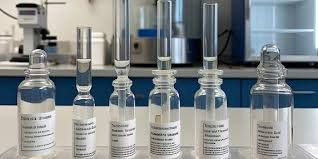A Study on the Stability of Injectable Therapeutics.

Understanding the Stability of Injectable Products
Injectable products — such as vaccines, biologics, and sterile pharmaceuticals — must maintain strict stability to ensure their safety, efficacy, and quality throughout their shelf life. Stability refers to the product’s ability to remain within its physical, chemical, microbiological, therapeutic, and toxicological specifications over time.
1. Types of Stability
-
Physical Stability: No visible changes such as precipitation, discoloration, or phase separation. This includes clarity for solutions and proper resuspension for suspensions.
-
Chemical Stability: The active pharmaceutical ingredient (API) remains chemically intact and potent. Degradation products must stay within acceptable limits.
-
Microbiological Stability: The product remains sterile and free from microbial contamination for the duration of its intended use.
-
Therapeutic Stability: The product’s effectiveness remains unchanged.
-
Toxicological Stability: No harmful degradation products accumulate over time.
2. Factors Affecting Stability
-
Temperature: Higher temperatures can accelerate chemical degradation and microbial growth. Many injectables require refrigeration or freezing.
-
Light Exposure: Some products, especially biologics and vitamins, are photosensitive and degrade when exposed to light.
-
pH Levels: Instability can occur if the product’s pH drifts, affecting solubility or causing precipitation.
-
Container-Closure System: Interaction with the container (glass, plastic, rubber stoppers) can lead to leaching of chemicals or adsorption of the drug to container surfaces.
-
Oxygen and Moisture: Exposure to air or humidity can lead to oxidation or hydrolysis.
3. Stability Testing
-
Real-Time Testing: Monitoring product under recommended storage conditions over time.
-
Accelerated Testing: Storing product at higher stress conditions (e.g., elevated temperature) to predict long-term stability.
-
Forced Degradation Studies: Deliberately exposing products to extreme conditions (light, heat, oxidation, etc.) to understand degradation pathways and validate analytical methods.
4. Regulatory Requirements
-
ICH Guidelines (e.g., ICH Q1A(R2)): Provide the framework for stability testing for new drug substances and products.
-
Good Manufacturing Practice (GMP): Requires ongoing stability monitoring (stability programs) throughout the product’s lifecycle.
-
Shelf Life and Expiry Dating: Defined based on stability data to ensure product integrity up to the point of use.
5. Special Considerations for Biologics
-
Sensitivity: Biologics (like monoclonal antibodies) are much more sensitive to physical stresses (e.g., agitation, freezing) compared to small molecules.
-
Aggregation: Protein aggregation can lead to loss of efficacy or increased immunogenicity.
-
Formulation Strategies: Use of stabilizers (e.g., sugars, surfactants) to protect protein structure.
🎓 Discover one of the best Quality Assurance courses available — click below to explore the course that’s shaping future QA skills.https://trcjw.on-app.in/app/oc/306166/trcjw

